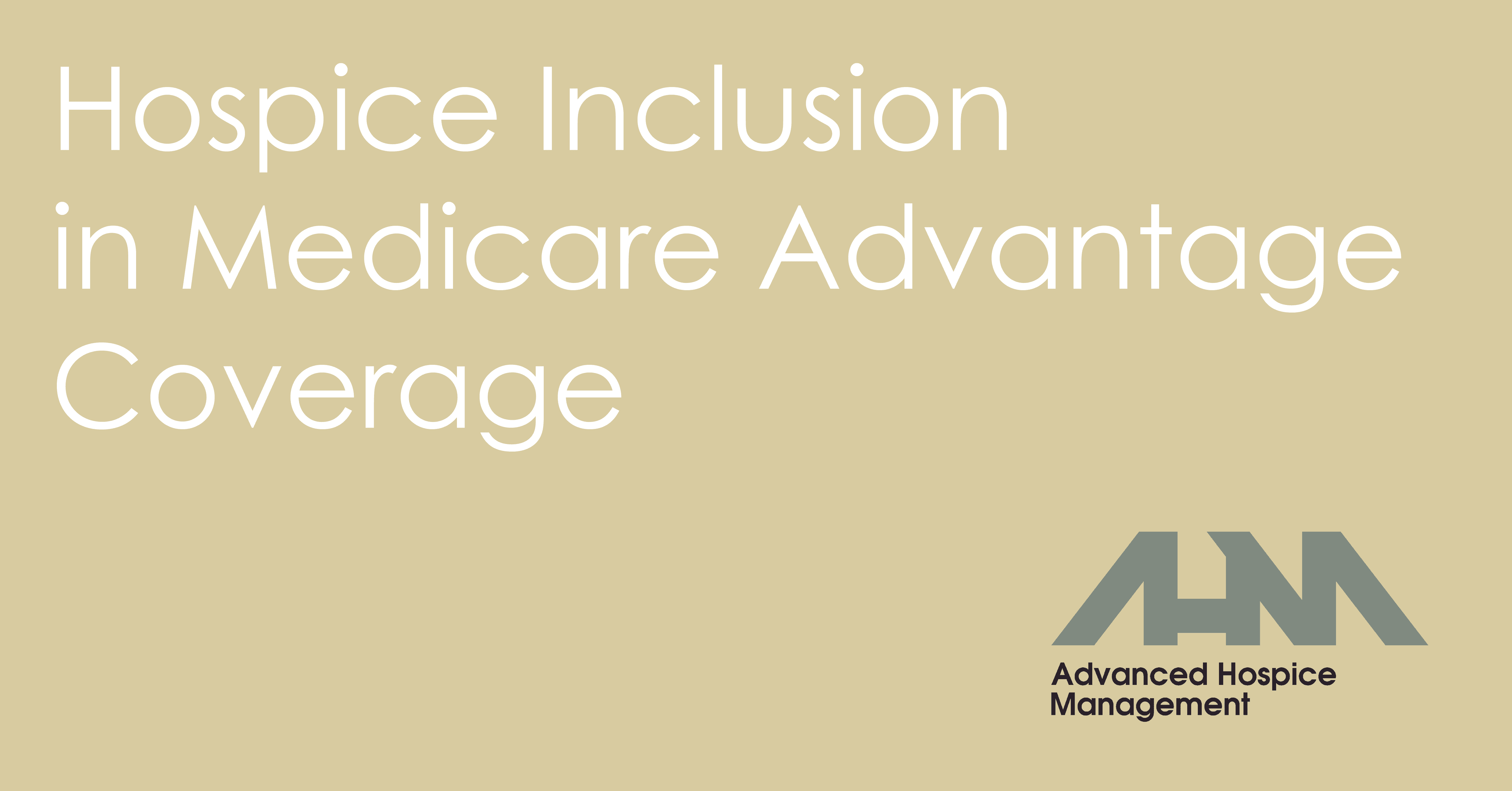
On January 1, 2021, CMS began testing the inclusion of the Part A Hospice Benefit within the MA benefits package through the Hospice Benefit Component of the Value-Based Insurance Design (VBID) Model. This test allows CMS to assess the impact on care delivery and quality of care, especially for palliative and hospice care, when participating Medicare Advantage (MA) plans are financially responsible for all Parts A and B benefits.
The pilot program will run through 2024 and will expand each year to include more MA plans over larger coverage areas. Hospices are not able to opt-out of participation in the pilot. If there are participating plans in your geographical area, you must follow the pilot program’s guidance for billing the hospice care to both Medicare and the MA plan. The participating plan will pay hospice providers for care.
Each year MA plans can implement new provider requirements. For example, in 2021 and 2022 providers are not required to contract with the MA plans or become participating providers, and plans are required to pay hospice providers at least the Medicare reimbursement rates for all levels of care. MA authorization requirements for hospice services and for level of care changes are also prohibited by Medicare. In upcoming years, we expect to see changes that may allow plans to restrict coverage or reduce payments to non-contracted providers. While those types of changes would encourage hospices to seek contracts with plans, it may also allow plans to negotiate lower than Medicare reimbursement rates and impose other limitations on providers such as shorter timely filing limits.
The 2022 expansion includes 115 participating plans that cover 461 counties, more than twice the coverage area
of 2021.
What hospices can learn from the 2021 VBID Provider Experience
The 2021 initial implementation of the pilot was not without challenges. Hospice providers had difficulty identifying patients with participating plans. Providers had difficulty reaching knowledgeable plan representatives regarding hospice coverage, the NOE process, claim formatting requirements, and claim submission options. Some plans had no process in place for accepting NOEs or processing claims when the pilot started in January. As a result, payments by MA plans were delayed by an average of six months
while processes were defined and streamlined.
How hospices in the newly expanded coverage area can get ahead of VBID challenges
Review the 2022 VBID expansion list and coverage areas, then develop a plan of action.
Determine potential agency impact- To help determine the MA pilot potential impact on your hospice, run eligibility on all current hospice patients. Make a list of participating MA plans in your service area and the total number of patients with each plan. This will allow you to calculate the percentage of patients you serve who are currently enrolled in participating plans. This will help you determine the potential financial impact on your agency should you encounter challenges with reimbursement. This will also be helpful in determining what payers you may want to engage in contracting now or in the future.
Remember, the pilot covers only new admissions on or after January 1, 2022 for newly covered areas and/or new participating plans. Your current hospice patients will remain under Medicare Part A even if they are enrolled in a plan that will participate in the pilot in 2022. Be aware that patients who are enrolled in 2022 participating plans, but covered under Medicare Part A in 2021, remain covered by Medicare unless they discharge and readmit after January 1, 2022. Upon readmission, the patient would be covered by the
participating MA plan.
Perform a cash flow analysis- As you can imagine, very few hospices were prepared for such a lengthy delay in reimbursement. While some hospices had very few patients with participating plans, others had large percentages of their census covered. We believe being financially ready is the most important aspect of preparation. Some hospice advisors recommend establishing a line of credit in case of a cashflow crunch. While we do not want to sound like alarmists, we do want providers to be aware of the potential impact so
they can be well prepared.
Identify participating VBID plans under MA coverage- When reading eligibility for a Medicare patient, the MA plan is listed on the plan page with the five-digit alphanumeric code. However, MA organizations have many different plans under that five-digit code, and they are identified by a three-digit extension that is not visible on all eligibility reports. For large MA organizations, only certain plans participated in the VBID pilot and can only be differentiated by the three-digit extension. Some eligibility programs provide this level of detail, but many do not. Confirm that your method of verifying Medicare eligibility includes not only the plan code but also the three-digit extension.
Reach out to the MA plans- The VBID program outlines MA plan requirements regarding the availability of information and guidance to providers. What we found in 2021 was difficulty reaching anyone at the plan help desk who knew the hospice NOE and billing requirements. There are assigned contacts for each 2021 participating plan on the CMS VBID webpage here – https://innovation.cms.gov/innovation-models/vbidhospice-benefit-participating-plans. CMS requires participating plans to communicate with hospice providers in its service area. CMS encourages hospice providers to communicate with participating plans regarding any questions about joining the plan’s network of hospice providers. For questions about enrollment, billing, claims, and contracting related to enrollees of participating plans, hospice providers should contact the participating MAO. For questions about the Model,
please contact CMS at [email protected].
Utilize technology and electronic options- Some plans have the capability to receive electronic NOEs through clearinghouses or payer portals like Availity. We strongly encourage hospice providers to enroll in payer portals and sign up for any payer education regarding hospice election and billing requirements. If you don’t currently use a clearinghouse, explore the benefits of electronic NOEs and claims for VBID payers that do not have their own portal or portal partner. Reach out to your EMR about their capability to submit NOEs and claims to both Medicare and the MA plan for the same dates of service.
Educate your billing team about VBID billing requirements- All NOEs and claims for patients with participating plans must be billed to both Medicare Part A and the participating plan. Claims to Medicare will deny with a code indicating the patient is covered under a participating VBID MA plan. Hospices should look to the plan for payment.
Stay informed-
- Follow the CMS VBID innovation page for the 2022 coverage expansion as well as many
other resources including outreach and education- https://innovation.cms.gov/innovation-models/vbidhospice-benefit-overview - 2021 Participating MA Organization contact list- https://innovation.cms.gov/media/document/vbid-cy2021-hoospice-contact-info-geo
- 2022 Participating MA Organization plans and contact list- https://innovation.cms.gov/media/document/vbid-cy2022-hospice-contact-info-geo
Let Advanced Hospice Management Help
The Advanced Hospice Management team of billing experts has spent 2021 supporting our clients through the VBID pilot through education, MA plan engagement, best practice development, and in-depth revenue cycle management. Our professional hospice billing team is knowledgeable and well-positioned to guide new VBID participating hospices in 2022 and beyond.
Our goal remains the same, regardless of payer- bill and collect timely and accurately to enable hospices to fulfill their mission of caring for terminally ill patients in their communities.


